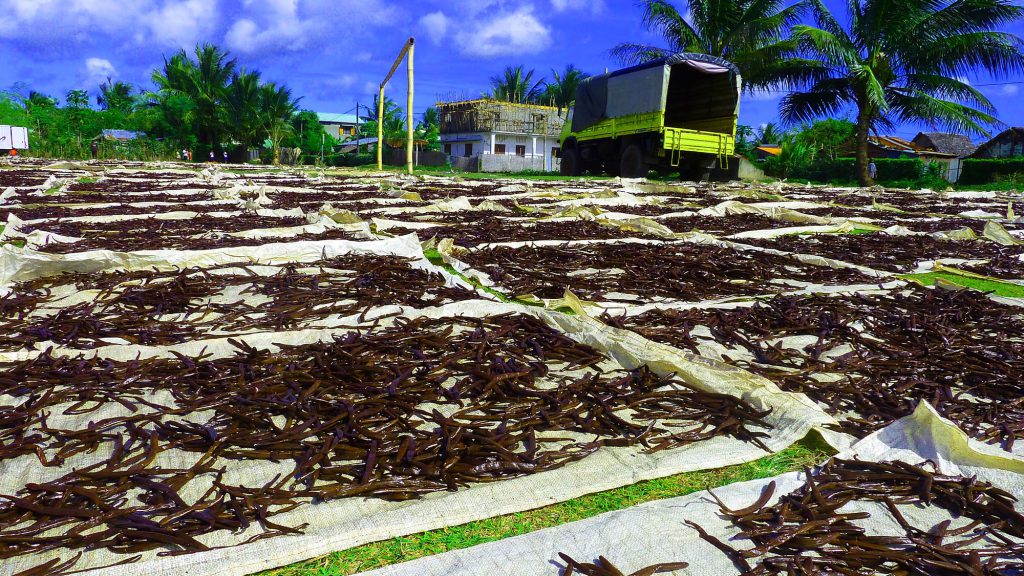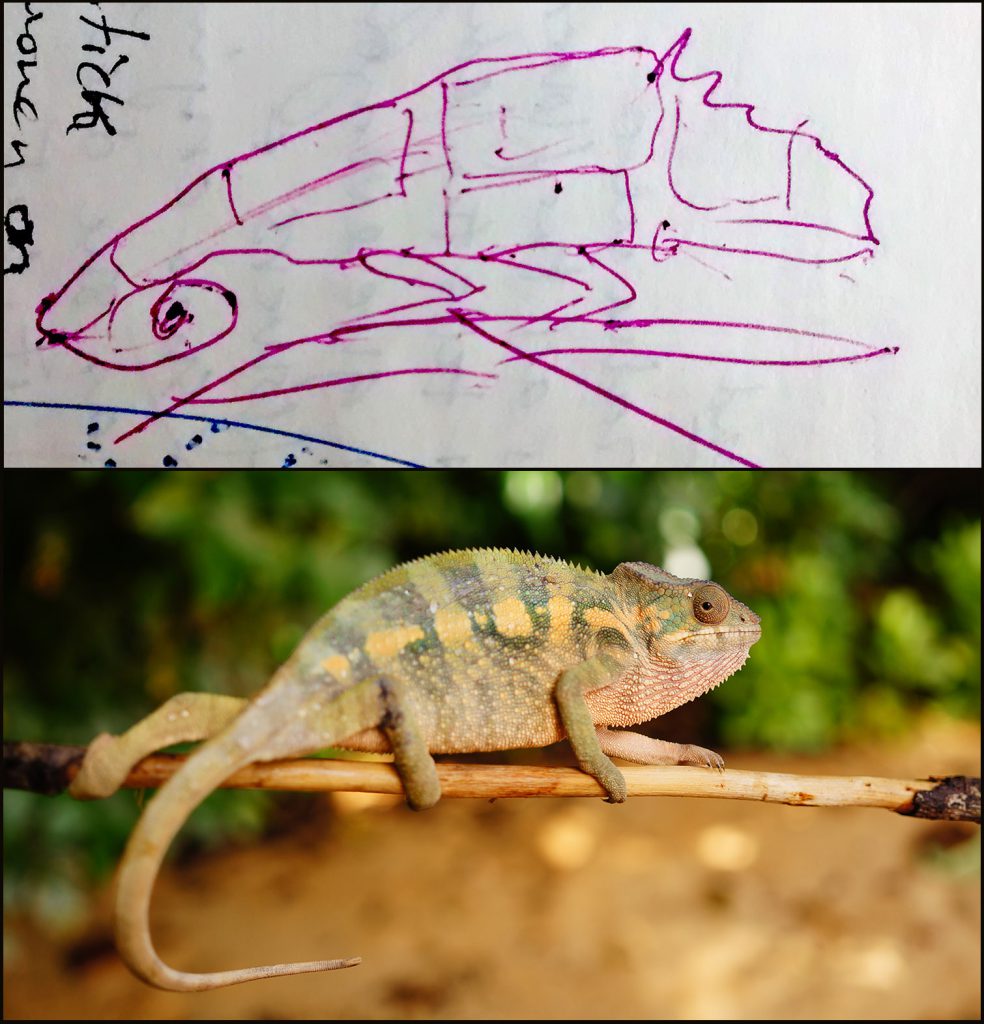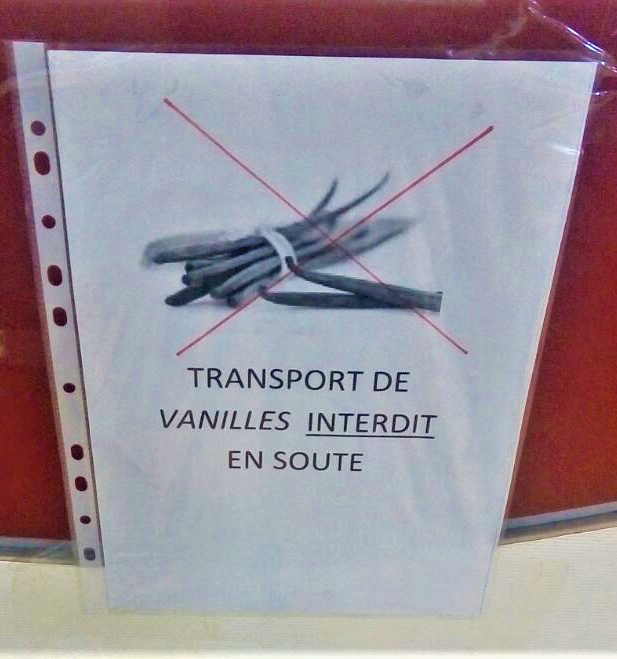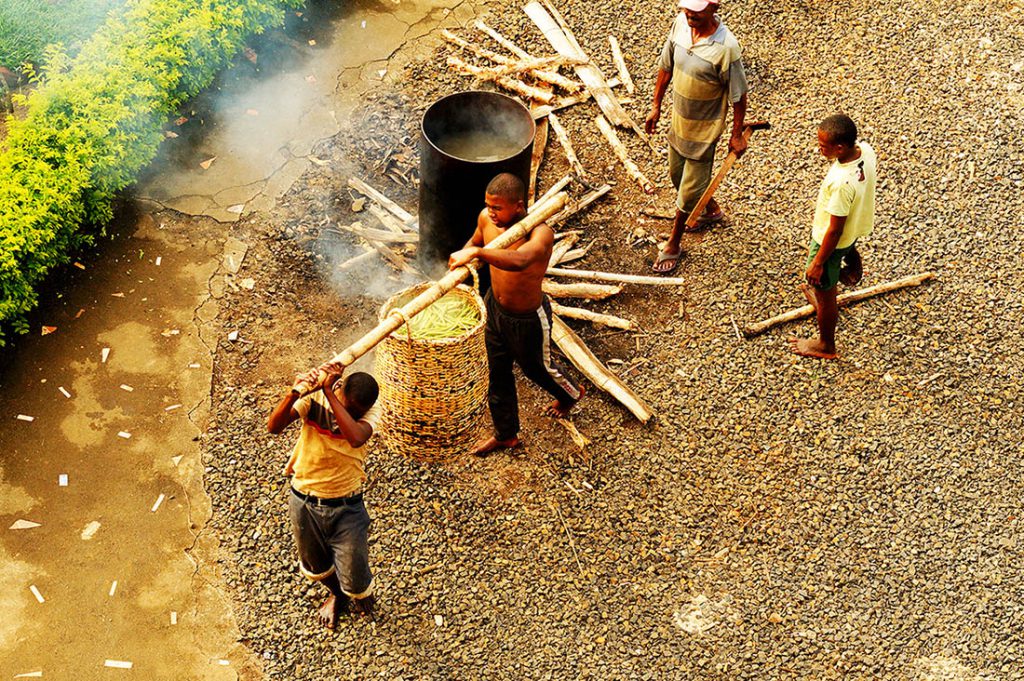Bracing for the Vanilla Boom

As the vanilla market opens in northeastern Madagascar this season, some local farmers will earn more money than ever before. With global vanilla prices now hovering around US$500 per kilogram—approximately the price of silver—a farmer’s crop could be worth tens to hundreds of thousands of dollars, in a country with an average income of less than two dollars a day.
Northeastern Madagascar is the center of the world’s vanilla production, generating nearly 80 percent of the global supply. The bean constitutes Madagascar’s largest export. Vanilla (Vanilla planifolia) is an orchid that grows like a vine. Thick and waxy, the vine is punctuated by occasional clusters of white flowers that, if pollinated, will each yield a long, green vanilla bean. The plant has been cultivated in Madagascar since the colonial period, during which time prices paid to vanilla producers were set by the French colonial regime. After the country’s independence in 1960, the new government of Madagascar took over, continuing to set low but predictable producer prices.
Beginning in the mid-1990s, at the insistence of global financial institutions, the Malagasy government deregulated local vanilla markets. (Malagasy is the term for the language and people of Madagascar.) Then in 2000, one of the largest cyclones in the region’s history devastated prime cropland; the resulting scarcity made vanilla prices soar into uncharted territory—about US$300 a kilogram. Rural villagers whose crops survived became rich virtually overnight. But rather than saving or investing the money, many villagers spent their earnings in what they refer to as “hot money” (vola mafana) sprees—buying copious luxuries, drinking heavily, or engaging in other types of profligate spending.
During the vanilla boom in 2000, hot money became a notorious feature of the social landscape in northeastern Madagascar. At the outskirts of town, you might have seen a chameleon traversing the bush with money glued to its back or a man joyously smashing mangoes along a dirt road. An elder neighbor may have tinkered aimlessly with his shiny new motorbike, having no intention of actually learning how to ride it. At the local market, someone dressed in fancy shoes might have stepped on your feet, teasing that he did not do it but rather “the vanilla” did. All across the region, farmers turned to seemingly bizarre ways of divesting themselves of their new wealth.
But less than five years after the 2000 boom, buyers turned to synthetic alternatives just as a wave of new growers joined the market, triggering a crash in the global price of vanilla by simultaneously lowering demand and increasing supply. Local prices dropped to as little as US$5 per kilogram, and vanilla farming once again became associated with meager returns. Farmers sold their motorbikes and mattresses, going back to sleeping on straw beds. Within the past few years, however, reduced supply due to more cyclones coupled with increasing global demand for natural vanilla have created yet another boom. Last year, prices reached up to US$600 per kilogram. No one knows how long this latest boom will last.
I lived in Madagascar as a Peace Corps volunteer in 2010 and the beginning of 2011, and returned again in 2014 and 2015 as a doctoral student to do ethnographic fieldwork. Studying the ups and downs of the local export economy, I interviewed farmers and residents about how they dealt with the cyclical boom and bust. They recalled stories of the extravagant spending that transpired during the vanilla boom in 2000 and the subsequent uptick in the market in 2015. The stories I heard were often thirdhand: someone who saw someone covering a chameleon with cash or handing a fruit vendor a stack of bills after shamelessly smashing his mangoes. These stories were so pervasive that surely some of them were more legend or rumor than truth. Regardless, it was clear that during boom times fast spending was the norm. In fact, more than spending money, it seemed that many people were just trying to get rid of it.
These odd and lavish consumer practices might strike the Western observer as utterly bizarre. But I came to see that there is a certain logic to such profligate spending. Perhaps it is not so crazy after all.
The vanilla market is one of the few ways to make money in northeastern Madagascar. Farmers have been growing vanilla in the region since the mid-19th century, when the plant was introduced from Mexico by French colonists. Remarkably little has changed in vanilla production since that time. Vanilla is grown on small family plots throughout the countryside. With no natural pollinator, vanilla flowers must be pollinated by hand. In 1841, Edmond Albius, a 12-year-old slave from the nearby island of Réunion, invented the pollination technique that made the crop commercially viable. This simple yet labor-intensive procedure, using no more than a splinter to manually pollinate the flowers, is still used today.
Normally, vanilla growing is a rather mundane affair. Farmers awaken each morning to pollinate their crop, eager to not miss the brief half-day window of fertility offered by each flower in bloom. If pollination is successful, the pale white petals will wither and fall within a week, yielding a single green vanilla bean that requires nine months to mature. Farmers either sell the green vanilla at market or cure it themselves to get nearly four times the uncured price. Profits are used for minor purchases, or to pay school fees, and are typically spent within six months. The income supplements a largely subsistence livelihood based on rice cultivation.
During boom times, the vanilla market makes life almost surreal. Paper money inundates the region, transforming impoverished farmers into Malagasy “vanillionaires.” Traveling vanilla traders come to farmers’ huts and unload piles of cash on their beds. In seeing such unseemly sums of money, some farmers allegedly go mad. One farmer, I was told, repeatedly screamed at the large pile of money he had just been paid and then shouted at his entire village to come spend it. Another farmer denied the payment he was offered, exclaiming that the money was too much. Yet another allegedly boiled all of his earnings in a large metal pot, secretly eating it as a type of money soup. He was found, the story goes, dead the next day.
Overnight wealth always comes at a price. In the time leading up to the market opening in the summer, northeastern Madagascar transforms into what looks like a crime scene. It is illegal to sell vanilla before the market officially opens. This is meant to control quality (early harvesting compromises the bean) and prevent theft. Theft, however, is rampant. Federal and local police patrol the roads, frisking those passing to check for vanilla or cash. Vigilante groups, taking the law into their own hands, do the same. Farmers sleep in their fields to protect their vanilla. Sometimes this works, sometimes not. Thieves may manage to steal a few beans, a vine, or even an entire crop. Residents in the region share photos on social media of farmers killed by machete while trying to protect their fields. They also post videos of thieves who have been caught and put on public display for their crimes. Beyond public shaming, mob killings of vanilla thieves are not uncommon. A once-quiet village may quickly become overwhelmed by angry villagers seeking the blood of a thief.
In addition to the vanilla beans, large stashes of cash are equally dangerous—and also impractical. For many farmers, it is hard to even imagine what their earnings might buy. For some, it buys a cow or a new roof. For others, there is nothing they need or even want that could possibly absorb such a windfall. The nearest banks are usually a day’s trek away. Holding on to their profit, or taking it to a bank, is an invitation to theft. Both the vanilla, and the cash it earns, can be a liability.
The vanilla market reveals with great clarity the disconnect between production and consumption that characterizes nearly all global markets, although perhaps not always so starkly. On the demand side, few consumers who are drawn to the delicate flavor of vanilla know that it is the fruit of a Malagasy farmer’s morning labor. They likely do not even know that vanilla was once a fruit (myself included, until one of my Malagasy co-workers pointed this out). Vanilla essence is easily synthesized in the laboratory for a fraction of the price of natural vanilla, and studies have shown that in blind taste tests consumers actually prefer synthetic vanilla to its natural alternative. Yet the consumer climate has created a demand for “authentic,” “natural,” and “organic” foods. Those who in all likelihood could not recognize a vanilla vine growing right next to them nonetheless require the flavor in their ice cream.
On the supply side, vanilla growers and curers in Madagascar have little knowledge of its ultimate use overseas, and they rarely use it themselves. To my great surprise, those I talked to in northeastern Madagascar consistently maintained that they were not certain what their vanilla ends up becoming. When I explained that vanilla is used as a flavor and fragrance, they nodded as though they had heard that before but did not entirely believe it. Rather than this mundane explanation, Malagasy producers have been known to speculate that vanilla is the vital ingredient in much more pivotal products, such as dynamite or tires. As ridiculous as these rumors might sound, they allow Malagasy producers to imagine their labor as contributing to essential global production processes rather than niche markets in taste and smell.
My friends and family back in the United States balk when I tell them about this paradox. How could a vanilla farmer not use the spice himself—or not even know that it is a spice? Likewise, Malagasy people chuckle when I tell them that foreigners who love vanilla really have no idea where it comes from. While both are amused by one another’s ignorance, there is of course a crucial difference: What is for the consumers an indulgence of the most inconsequential kind is for the producers the fundamental basis of their economic livelihood. Luxury consumer impulse at one end of the world sends paper money spitting out into the lives of rural communities at the other end, inaugurating a new generation of hot money spenders in the process.
As bizarre as Madagascar’s hot money spending seems, I have come to think of it as being in fact quite logical. Rather than “primitive” or misguided behavior, hot money spending can be understood as one of an infinite variety of ways to deal with the fleeting abundances occasionally offered by global capitalism. In certain respects, the rural farmer plastering money to chameleons at the side of the road might as well be a Malagasy Jeff Koons (the contemporary artist renowned for his sculptures of giant balloon dogs, one of which sold for nearly US$60 million) performing the excesses of capitalism through avant-garde art. From one vantage point, such practices can be dismissed as ludicrous. But from another, they might be said to honestly reflect the extreme dynamics of the new global economy, where money does not slowly accumulate over time but comes and goes in jarring leaps.
When cash is fleeting, unpredictable, and dangerous, it may be just as logical to treat it as ephemeral and meaningless as to treat it with seriousness and reverence. Extravagant spending deflates the power of money, reinstating autonomy in the face of uncertain times. As strange as it may seem to some, Madagascar’s vanilla-boom profligacy offers a sobering reflection on capitalist development in an era of global financial speculation—what some have aptly termed “casino capitalism.” Far from a system of rational economic progress, the new global economy more closely resembles a high-stakes game of fortunes won and lost. At one end, elite financiers roll the dice on speculative investments, while at the other end, Malagasy “vanillionaires” navigate the resulting booms and busts. Far from the world’s capitalist centers, rural Malagasy farmers must nonetheless ride the waves of today’s speculative economy.
































